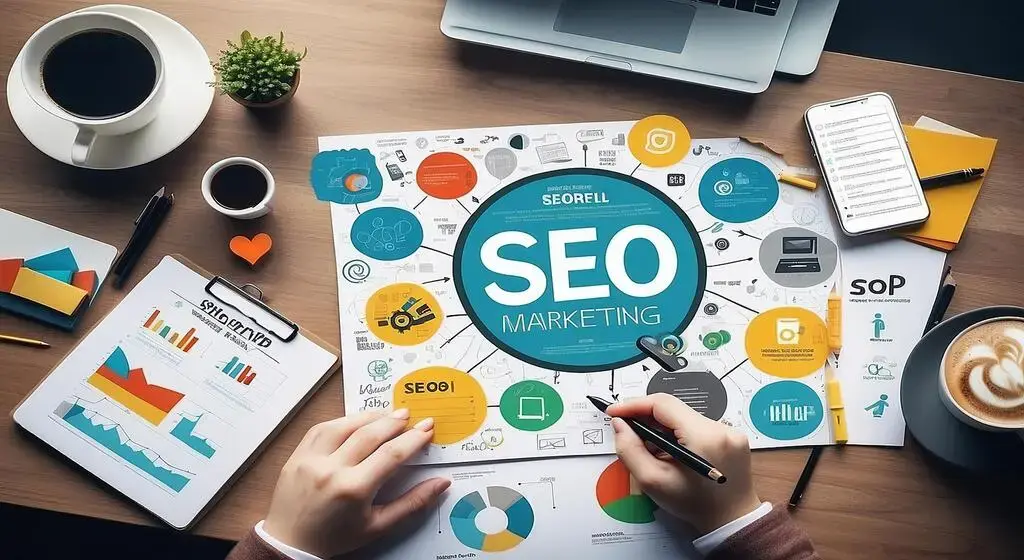In today’s digital landscape, ensuring your WordPress site is optimized for search engines is crucial for visibility and driving traffic. Search Engine Optimization (SEO) can seem daunting, but with a clear checklist, you can systematically enhance your site’s performance. This comprehensive guide provides an extensive SEO checklist to help you maximize your WordPress site’s potential and achieve your digital goals.
Introduction: Why SEO Matters for Your WordPress Site
SEO is the process of improving your website to increase its visibility on search engines like Google. Higher visibility means more traffic, which can translate into higher engagement and more conversions. Given the competitive nature of online content, mastering SEO is essential for standing out. Effective SEO practices ensure that your content reaches the right audience, improving your site’s overall performance and achieving your business objectives.
1. Keyword Research: Laying the Foundation
Understanding Your Audience
Effective SEO starts with understanding your target audience and what they are searching for. Tools like Google Keyword Planner, Ahrefs, and SEMrush can help identify relevant keywords with high search volume and low competition. Incorporate these keywords naturally throughout your content to improve your ranking.
Long-Tail Keywords
Long-tail keywords are specific phrases that visitors are more likely to use when they’re closer to making a purchase or finding what they need. These keywords are less competitive and can drive more targeted traffic to your site. For example, instead of using “cybersecurity,” use “best cybersecurity practices for small businesses.”
Analyzing Competitors
Analyze your competitors’ websites to identify which keywords they are targeting and ranking for. This can provide valuable insights into potential opportunities and gaps in your own keyword strategy. Use tools like Moz and SpyFu to gain a competitive edge.
2. On-Page SEO: Optimizing Individual Pages
Meta Titles and Descriptions
Every page should have a unique meta title and meta description. These elements not only help search engines understand the content of your page but also appear in search results, influencing whether users click through to your site. Keep your meta title under 60 characters and your meta description under 160 characters, including your primary keyword.
Heading Tags
Use heading tags (H1, H2, H3, etc.) to structure your content. Your H1 tag should include your primary keyword and clearly state what the page is about. Subheadings (H2, H3) should be used to break up your text and make it easier to read.
Image Optimization
Images should be optimized for SEO by including descriptive file names and alt text that incorporate relevant keywords. Compress images to improve page load speed, as slow-loading pages can negatively impact your SEO. Tools like TinyPNG and Smush can help with image compression without sacrificing quality.
Internal and External Links
Link to other relevant pages on your site (internal links) to keep visitors engaged and help search engines crawl your site. Include external links to reputable sources to enhance the credibility of your content. Both types of links can improve your site’s SEO. Ensure that your internal links follow a logical structure and that external links open in a new tab to keep users on your site.
URL Structure
Create clean, descriptive URLs that include your primary keyword. Avoid using long, complex URLs with unnecessary characters. A well-structured URL helps search engines understand the content of your page and improves user experience.
Content Formatting
Proper content formatting improves readability and user engagement. Use bullet points, numbered lists, and short paragraphs to make your content easy to digest. Incorporate multimedia elements like images, videos, and infographics to enrich your content and provide additional value to your readers.
3. Technical SEO: Ensuring a Solid Foundation
Mobile-Friendliness
With the increasing number of users accessing the internet via mobile devices, having a mobile-friendly site is crucial. Use responsive design to ensure your site looks good and functions well on all devices. Google’s Mobile-Friendly Test can help you evaluate your site’s performance.
Site Speed
Page load speed is a critical factor in SEO. Slow pages can lead to higher bounce rates and lower rankings. Use tools like Google PageSpeed Insights to analyze your site’s speed and identify areas for improvement. Consider using a content delivery network (CDN), optimizing images, and minimizing code to boost performance.
Secure Your Site with HTTPS
Security is a priority for search engines and users alike. Ensure your site is secure by implementing HTTPS. This not only protects your visitors’ data but also boosts your SEO, as Google considers HTTPS a ranking factor. Obtain an SSL certificate from a trusted provider and regularly update your security protocols.
XML Sitemaps
An XML sitemap helps search engines crawl your site more effectively. It provides a roadmap of all the pages on your site, making it easier for search engines to index your content. Use plugins like Yoast SEO or Google XML Sitemaps to generate and submit your sitemap to search engines.
Robots.txt File
The robots.txt file tells search engines which pages to crawl and which to avoid. Properly configuring your robots.txt file ensures that search engines focus on your most important content. Use tools like Screaming Frog to analyze and optimize your robots.txt file.

4. Content Quality: Engaging and Informative
High-Quality Content
Content is king in the world of SEO. Focus on creating high-quality, informative, and engaging content that meets the needs of your audience. Use your primary and secondary keywords naturally, without keyword stuffing, to maintain readability and relevance.
Regular Updates
Regularly updating your content keeps it fresh and relevant. Search engines favor sites that consistently provide new and updated information. Update old posts with new data, images, and insights to keep them relevant.
User Experience (UX)
A positive user experience is crucial for SEO. Ensure your site is easy to navigate, with a clear structure and intuitive design. Optimize your site for accessibility, making it usable for all visitors, including those with disabilities.
Social Sharing
Encourage social sharing by including social media buttons on your posts. This can increase your content’s reach and drive more traffic to your site. Engage with your audience on social media to build a community around your content.
5. Off-Page SEO: Building Authority
Backlink Strategy
Backlinks from reputable sites can significantly boost your SEO. Focus on building high-quality backlinks through guest blogging, partnerships, and influencer outreach. Avoid low-quality or spammy backlinks, as these can harm your site’s reputation.
Local SEO
If you have a local business, optimize your site for local SEO. Claim and optimize your Google My Business listing, include local keywords, and encourage customer reviews. Local SEO helps you reach a targeted audience in your geographic area.
Conclusion: Stay Ahead with Continuous SEO Improvement
SEO is not a one-time task but an ongoing process. Regularly monitor your site’s performance using tools like Google Analytics and Search Console. Stay updated with the latest SEO trends and algorithm changes to ensure your site remains competitive.
By following this comprehensive SEO checklist, you can improve your WordPress site’s visibility, drive more traffic, and achieve your digital goals. Start implementing these strategies today and watch your site’s performance soar.
Enhance your website’s search engine ranking and significantly increase your online traffic by leveraging our expert SEO services. Our comprehensive approach ensures optimal visibility and attracts the right audience, driving more engagement and conversions for your business.






